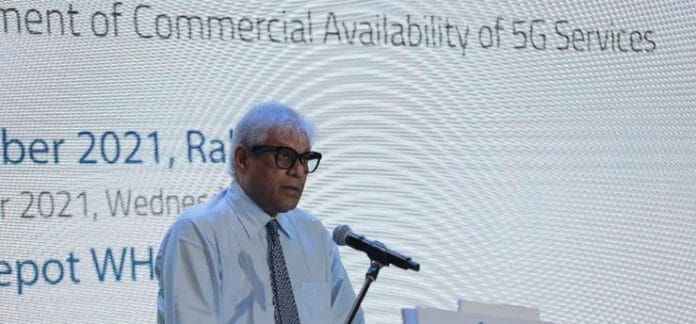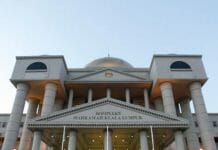Despite the broadest publicity, all sort of advocacy and lobbying by various interested parties involved, the so-called single wholesale network (SWN) model proposition by Digital National Berhad (DNB), as it stands today, doesn’t hold water from the perspectives of nation-building, technical feasibility, financial and commercial viability as well as governance and integrity.
Therefore, this matter deserves urgent and closest attention, the highest level of scrutiny, radical transparency, and open and extensive public debate. Writing wide-page advertorial content that, in fact, raises even more critical questions and self-contradictions than providing definitive answers is one thing. However, it takes a whole new level of viability, economic sense, and feasibility to withstand open and live public debate with experts from across the industries.
In this series of articles (2 parts), EMIR Research invites the public and policymakers to critically relook into all the publicly available information surrounding DNB-led SWN proposal that transpires so far from those same critical angles—technical feasibility; financial and commercial viability; governance and integrity and of course widely-claimed intergenerational impact on the national wellbeing.
The first part focused on the technical feasibility and financial viability.
This article will discuss the issue of governance and integrity as well as the impact on nation-building in the following manner.
Governance and integrity
Firstly, in looking at Singapore’s 5G governance ecosystem, our neighbour doesn’t rely only on Ericsson. While as one of the telcos awarded with the operator license by the Infocomm Media Development Authority (IMDA), Singtel Ltd is using Ericsson also, the other two, i.e., the M1-Starhub joint-venture (JV), have opted for Nokia for the 5G standalone architecture. Hence, there is no network equipment provider (NEP) monopoly as in the case under the SWN model in Malaysia.
What this simply means is that Singapore’s 5G governance (institutional framework) is business model-friendly – as the different telcos can synergise and link up with a specific NEP tailored to their market strategy and customer base.
On the argument that “DNB will be properly governed due to the existence of Board of Directors”, this is superficial reasoning or logic. Learning from the 1MDB scandal, financial oversight and prudence will be crucial for DNB. Relying on internal governance and code of business conduct subject to the oversight of the Board of Directors will not suffice. This is especially pertinent when the Prime Minister or Finance Minister (who can be the one and same person) holds the governance “trump card” and has the ultimate say.
Independent mechanisms on the appointment of Directors and full transparency of data accessible to properly empowered independent oversight entities will be required to prevent financial abuse and misappropriations.
As to the issue involving rural coverage, this can readily be deployed via the pre-existing Universal Service Provision (USP) fund. The USP fund has been in existence since 2002 under the oversight of the Malaysian Communications and Multimedia Commission (MCMC), where licensees have to contribute 6% of weighted net revenue every year. As at end-2020, the USP fund had RM10.09 billion in accumulated funds, money that is already being earmarked to bridge the country’s digital divide under the Jendela initiative.
The MCMC has allocated RM3.2 billion under the Universal Services Provision (USP) Fund for 2021 to improve the quality of broadband services with a focus on rural areas. Hence, there’s still considerable massive financial “firepower” left – which can be deployed to ensure all the rural areas (both in West and East Malaysia) can be covered – with fibre – to the fullest extent possible.
As for DNB venture financing, the much-vaunted grandiloquence about the “securitised future cash flows” which gives the impression that financing will be self-sustained by income doesn’t alter the fact that DNB is still raising bonds in the form of sukuk. In other words, DNB will still be in debt (when the sukuk term matures). This means that if cash flows falter, this impacts DNB’s capability to repay the debt — which in principle is no different from the experience of 1MDB.
Furthermore, DNB promises to bridge the national digital divide between urban and rural areas via 5G coverage to expedite the catalysing of digital transformation in the country under — and this is critical — a supply-driven approach. This, of course, is the opposite of the demand-led approach of the telcos’ business model.
Whilst broadband, in general, is a utility and ought to be considered a constitutional right, and therefore should be treated as no different than other utilities (and natural resources), it’s a misconception to apply the supply-driven model.
The supply-driven model undertaken in many states with respect to the provision of treated water is to be differentiated from 5G. Unlike treated water which knows no other category, 5G is a specific type of cellular technology within the broad concept of broadband—likewise 4G and so on. The provision of fibre, including fibre to the home (FTTH) for fixed broadband and mobile broadband, is sufficient to satisfy the purpose of a supply-driven model (as a typical utility like treated water and electricity) without the need for 5G coverage as such.
DNB’s plan is for 5G deployment to reach approximately 39%-40%% coverage by the end of 2022 and 73% in the following year and 86% by 2024. Is DNB’s aim realistic in any way?
It is interesting that despite obvious telco business disadvantages of multi-operator core network (MOCN) model as discussed in “Deconstructing 5G Rollout in Malaysia — Part 1” there have been talks of telcos proposing Dual Wholesale Network (DWN) model where they could form the alternative consortiums
At least DWN could complement and supplement the speed of the 5G rollout – but based on a demand-driven business model. And not least, more in line with the thinking and recommendations of the Report. To quote from the Report again: “Active sharing in the form of… MOCN [multi-operator core network], antenna sharing, etc. can be mixed among telcos. However, all of these methods should be carefully evaluated to ensure no impact on quality”.
Another consortium would provide telcos with the flexibility needed for their respective business models – whether based on MOCN or not.
Having two consortia would also spur competition in quality and standards, and ensure checks and balances between them.
DNB is yet to prove to be the solution to the national internet problems and more
DNB promises to deliver wider (bridging national digital divide) 5G coverage faster to simply “catalyze digital transformation in Malaysia”. But can it?
This is because our policymakers, conveniently, in their haphazard planning, never try to understand and back by data and research the causal relationship between the planned inputs-outputs and expected outcomes-impacts.
Before quoting Korea as an example and benchmark for 5G adoption, we must acknowledge that countries like China, Korea, Singapore have spent at least the last three decades meticulously, rationally, consistently building up the foundational blocks for the 4th Industrial Revolution (4IR) while our country has spent the same decades on largely procrastinating and destroying those foundations. Therefore, for these countries, 5G is a necessity and super quick in uptake as 4IR progress is already ubiquitous in their populations.
Therefore, there is no urgency in pushing 5G population-wide. However, there is incredible urgency of yesterday to streamline all our national policies aimed at nurturing (through education system) well-rounded citizens who are well-positioned and empowered to face, navigate, and thrive 4IR, championing deep integration of 4IR frontier technologies at every level of society (individual, industry, government, and environment) streamlining all inefficiencies and corruption and encourage growth and progress for all. And in doing so, we need to maximize the impact per every dime spent—we have absolutely no more room for white elephant projects.
The internet usage data can be a gross indicator of where Malaysia is as a value-added “adopter”. For example, Bank Negara Malaysia (BNM) recently reported that 81.2% of Malaysians use the internet to mainly download media and play games (indicating a strong focus on entertainment), while an embarrassingly small percentage engage in productive activities such as professional networking (9.1%), content creation (11.8%) and learning from formal online courses (4.8%). And this is merely with internet penetration of nearly 90% of the population!
Therefore, increasing speed or bandwidth through 5G does not necessarily mean more productive use of the technology. Mentioning South Korean’s ability to watch a live baseball game from various angles and the use of Augmented Reality does not seem to add much value to Malaysia’s economy. Not to mention that not many people, especially in the rural areas, will not readily have access to gadgets that can utilise 5G — unlike basic internet connection. So what demand DNB is talking about is not clear.
Thus, 5G that is not complemented with high added-value, innovative use that generates real productivity will not enable “moving out of the middle income” trap. These projected “sophisticated activities” that can be done faster and better must be identified and expanded upon.
Even if 5G manages to boost the economy as claimed, becoming a “high income” nation has been an old moving target. Comparisons with other high-income nations such as Singapore or South Korea are meaningless given Malaysia’s apparent level of governance and inequitable economic practices that widen the wealth disparity, running contrary to the widely touted “shared prosperity” illusion. The question with “high income” is always: high income for who?
All in all, we need to start seeing and applying solutions where they are needed and when they are needed. But this has been the government approach for quite some time: instead of gradually investing in the serious renovation of the house structure, we are not even patching the cracks on the wall—we put beautiful pictures to cover them until the whole house collapses (ringgit-spinning with no impact).
As we can see, the DNB proposition debate is a complex issue with numerous far-reaching implications for our economy and national future. Such fateful decision making cannot happen behind closed doors.
It requires full transparency of all relevant data (pertaining to ALL relevant costs and benefits) to verify and substantiate technical, economic and financial assumptions and necessitates systems thinking approaches brought to light in a live public debate. The outcome must be a synergistic win-win arrangement with respect to the cost-benefit for all stakeholders.
Rais Hussin, Margarita Peredaryenko and Jason Loh are part of the research team of EMIR Research, an independent think tank focused on strategic policy recommendations based on rigorous research.









